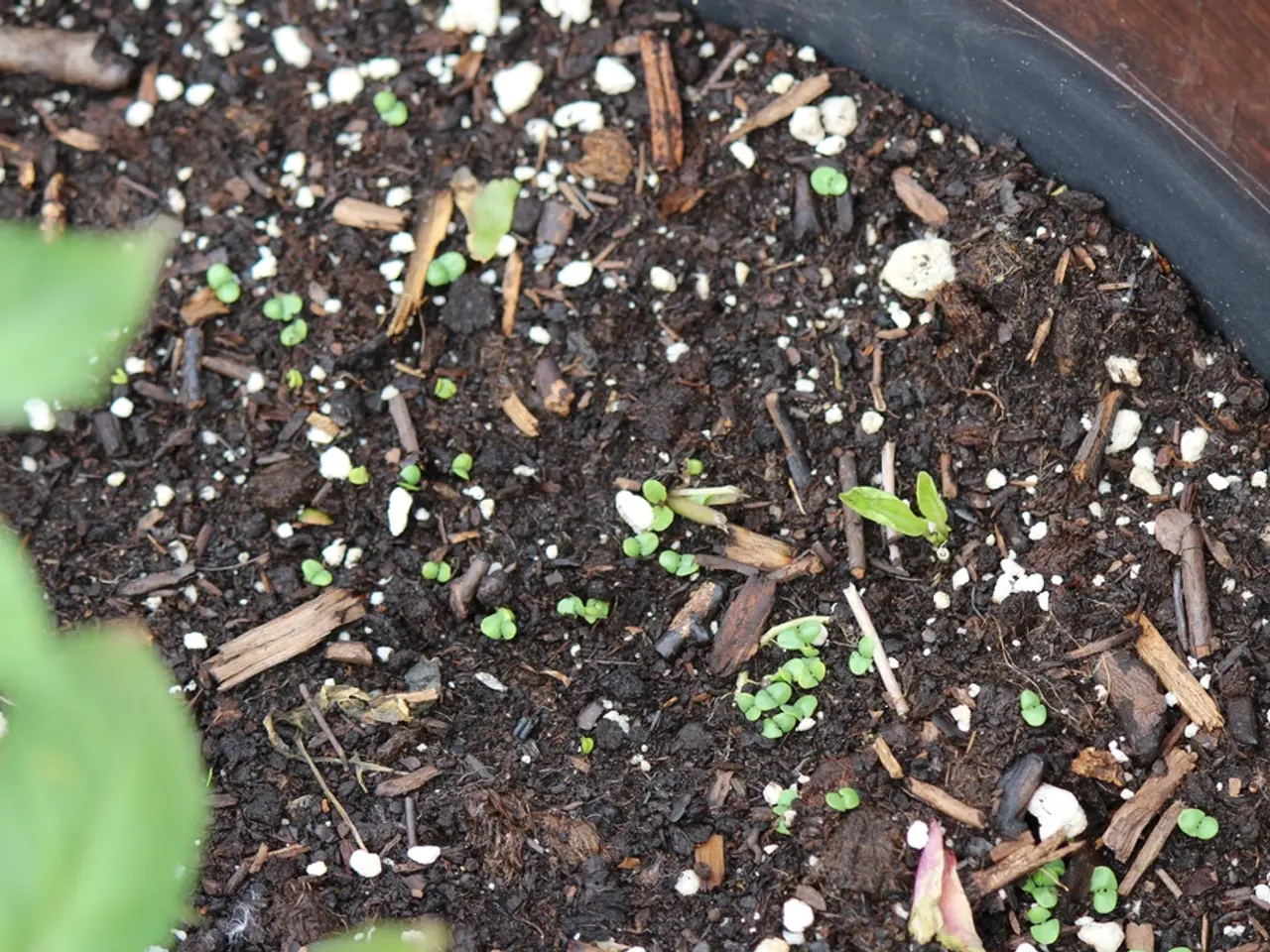Protecting Plant Health: Eliminating Soil Pests for a Thriving Garden
In the world of houseplants, regular maintenance is key to keeping your green friends thriving. Today, we'll cover two essential aspects: repotting and natural pest control.
Repotting Your Houseplants
Repotting is a six-step process that ensures your plant has enough room to grow and remains healthy. Here's how to do it:
- Turn the plant sideways and gently tap the bottom until it slides out of its pot.
- Loosen the plant's roots gently with your fingers.
- Remove about one-third or more of the old potting mix surrounding the plant.
- Pour a layer of fresh potting soil into the new planter and pack it down.
- Place your plant into the new pot, centering it, and add more potting mix around the plant.
- Water the plant well after repotting.
Remember, it's best to repot outside or over some newspaper as it can get messy. And if you want to prevent your plant from growing bigger, you can trim some of its roots and growth above the soil.
Always use potting soil, not soil from your garden, and choose a pot that's only one or two inches larger than the old one. Repotting should be done every two years or when the plant has obviously outgrown its pot.
Natural Pest Control for Houseplants
Pests can be a nuisance when it comes to houseplants. However, there are effective, natural methods to eradicate them. Here are some you can try:
- Hydrogen Peroxide: Diluted at 1 part hydrogen peroxide to 4 parts water, it can be used to flush soil. It kills larvae such as fungus gnats while being safe for the plants when used correctly. This oxidizing agent destroys pests by releasing oxygen that damages larvae and microbes.
- Diatomaceous Earth: This natural powder, made from fossilized aquatic organisms, physically dehydrates and kills soft-bodied bugs like gnats and mites when applied topically to soil surfaces. It is safe to use in houseplants and can be combined with other powders such as sand or cinnamon for enhanced effect.
- Neem Oil: This botanical insecticide disrupts insect growth and feeding. It can be applied as a soil drench or foliar spray to control a broad spectrum of pests naturally.
- Insecticidal Soap: This works by breaking down insect cell membranes causing dehydration and death. It is effective against soft-bodied pests like aphids and mealybugs and can be applied safely to most houseplants as a spray.
Additional practices to support control include avoiding overwatering and maintaining appropriate humidity to reduce conditions favoring pest proliferation. Replacing potting soil periodically also helps reduce pest buildup and improve root health.
In summary, a combination of diluted hydrogen peroxide soil drenches, topical applications of diatomaceous earth, neem oil treatments, and insecticidal soap sprays form an effective, natural integrated pest management approach for houseplant soil bugs. Adjust methods carefully to plant type and infestation severity.
Always repot into a pot with holes in the bottom for drainage. Happy gardening!
Maintaining a lifestyle with indoor plants can extend beyond just their regular maintenance, delving into aspects like home-and-garden tasks such as repotting and natural pest control. For repotting, carefully follow a six-step process that provides ample space for growth while keeping the plant healthy. Meanwhile, employ effective, eco-friendly pest control methods to keep your plants pest-free. These methods may include using diluted hydrogen peroxide to flush soil, applying diatomaceous earth topically, utilizing neem oil treatments, and resorting to insecticidal soap sprays.




